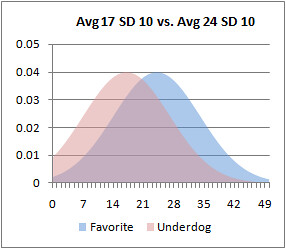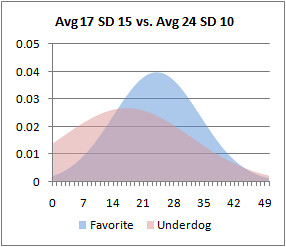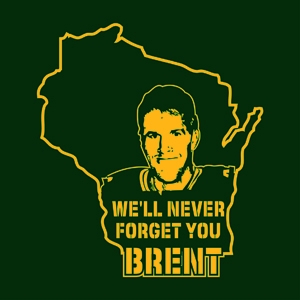College football is big business. The highest earning school, the University of Texas,
pulled in over $120,000,000 dollars last year (in all sports). Ohio State and Florida finished close behind, with over $117,000,000 and $106,000,000, respectively. This money, of course, drives the product on the field: more money means more resources to recruit good players, and more money to pay (presumably) good coaches. For example,
the list of the top earning schools contains few surprises: the SEC has eight teams in the top 25, while the Big 10 and Big 12 both have six. The Pac-10 has but three, and the ACC has only one (Duke, obviously for basketball), and the Big East has none. Notre Dame is the lone outlier (and it is hardly an outlier considering it has its own TV contract).
This influx of money is directly related to how much the coaches get paid. Look at
this list of the highest paid college football coaches (slightly out of date, for example still lists Tommy Tuberville, Mike Belotti, and Phil Fulmer):

So which conference has the most economic weight? It appears that
the victory for now goes to the SEC:
According to figures presented by [Clay] Travis, SEC total football revenue for the 2005 season hit just in excess of $350 million. Those funds are largely a result of ticket sales and officially licensed merchandise. To put the SEC’s earnings into context, its total revenue was $73 million more than brought in by the Big 10 Conference, which includes schools in the midwest and stretching into the northeast.
And the rich is only going to get richer: the SEC has of course signed a mega-TV deal will only expand its monetary base and brand exposure.
Chicken or the egg, money or cultureThe SEC has, I am fairly convinced, the "best" football in the country. Now, "best" is a loaded term. I use it here to refer to the most heated competition among the best assortment of players and the best coaches,
in the aggregate. Pete Carroll at USC probably runs the best program in the country, and his program also year-in and year-out has the best players of any one program. The Big 10 and Big 12 both have outstanding coaches and schools, and quite often matches the SEC in terms of draft picks (I also
do not buy the "speed in the south" myth). Indeed, the best championship game of this decade took place between a Big 12 school (Texas) and a Pac-10 one (USC). But, week in and week out, the SEC puts out the best consistent product.
One of the theories for why this might be -- and it is very difficult to argue that the SEC does not have excellent coaches and players -- is that "the south is just different," and that there's a "culture of football." I do buy this -- I'm from the southern states -- but that alone cannot explain things. As the
Gainesville
Times reported:
It’s a scene that plays out regularly in the fall. Masses clad in team colors descend on college campuses to join in the ritual of cheering on their favorite school in a mass of excess that includes tailgate parties, lavish recreational vehicles and oversized flags with the school crest flying as far as the eye can see.
"There’s just something majestic about it, said Gainesville native and Ole Miss graduate Tharpe Ward. "I grew up on college football and I just love the sport, tailgating, and everything that goes with it."
The reasons most fans give for throwing themselves into college football revolve around the fact that its an escape from day-to-day pressures of the real world, while getting to act like a 21-year-old again at the place where they once studied.
Fans spend big money to get all the necessities for the optimum game day experience: grills, satellite dishes, generators, big screen televisions and all the home decor to bring the best memories of the school’s football past within arms reach in the form or pictures and paintings. Time is prioritized with football at the top of the list. Weddings, birthday parties and vacations come secondary to making it on campus for the big games.
That is all true, and I will have more to say on that in a moment, but the spirit and culture cannot explain it all. Indeed, Michigan, Ohio State, and Texas arguably have better football "cultures" than any individual sports program in the south.
In this limited context, therefore, I am a materialist: the SEC has better football simply because it has more money, and it has shared that money among its different members (all SEC teams get a slice of everyone's bowl game money). Indeed for years Kentucky took slices of Florida's, Georgia's, and Alabama's bowl money, while it fed some of that back into the pot come basketball season. It still strikes me as wild that South Carolina can finish in the top 10 of all sports revenue earners, ahead of every single Big East School and every ACC school except Duke.
The one troubling wrinkle to me is that, yes, you get money by being able to have legions of fans who will pay for tickets 80,000+ stadiums, along with everything else. And yet, the south -- and the midwest for the Big 10, and southwest for the Big 12 -- which are unequivocally the most football mad areas of the country, also happen to be among its
least educated and
poorest. I don't know why this is. I mean, I suppose a proper metric would just be to evaluate percentage of recreational or entertainment expenses as a proportion of total income or total expenses, and then just see if the southern, midwestern, and southwestern states spend their money on football while people on the coasts or elsewhere spend it on other entertainments that could, roughly at least, be substituted for one another.
It just is strange the consider the hoopla surrounding the recent SEC media day in light of the fact that the south is being hit worse than any other area (sans some of the most overpriced real estate markets, i.e. New York, San Francisco, etc). And the fact that the SEC brings in more money than any other conference despite servicing the poorest (relatively) area of the country. (I am well aware that many who spend this money are displaced southerners who live elsewhere; I am one of them.)
I don't have a firm answer. Maybe it is just cultural. I do stand by the statement that the SEC is simply the best in the aggregate and over time because it has the most money to spend on its resources and coaches. But football, like most sports, does occupy a strange spot in our culture.
But, if football merely occupies a vacuum that could have been occupied by something else, then lucky for these regions that it is football and not something else. F. Scott Fitzgerald, in euologizing his friend, Ring Lardner, a baseball writer, lamented that baseball was but “a boy’s game, with no more possibilities in it than a boy could master.” In Fitzgerald's view, that limited Lardner's potential as a writer. Fortunately, in football, by contrast, the possibilities, narratives, complexities, and legends are boundless -- and it enriches us as we, maybe so, enrich the business of it.















